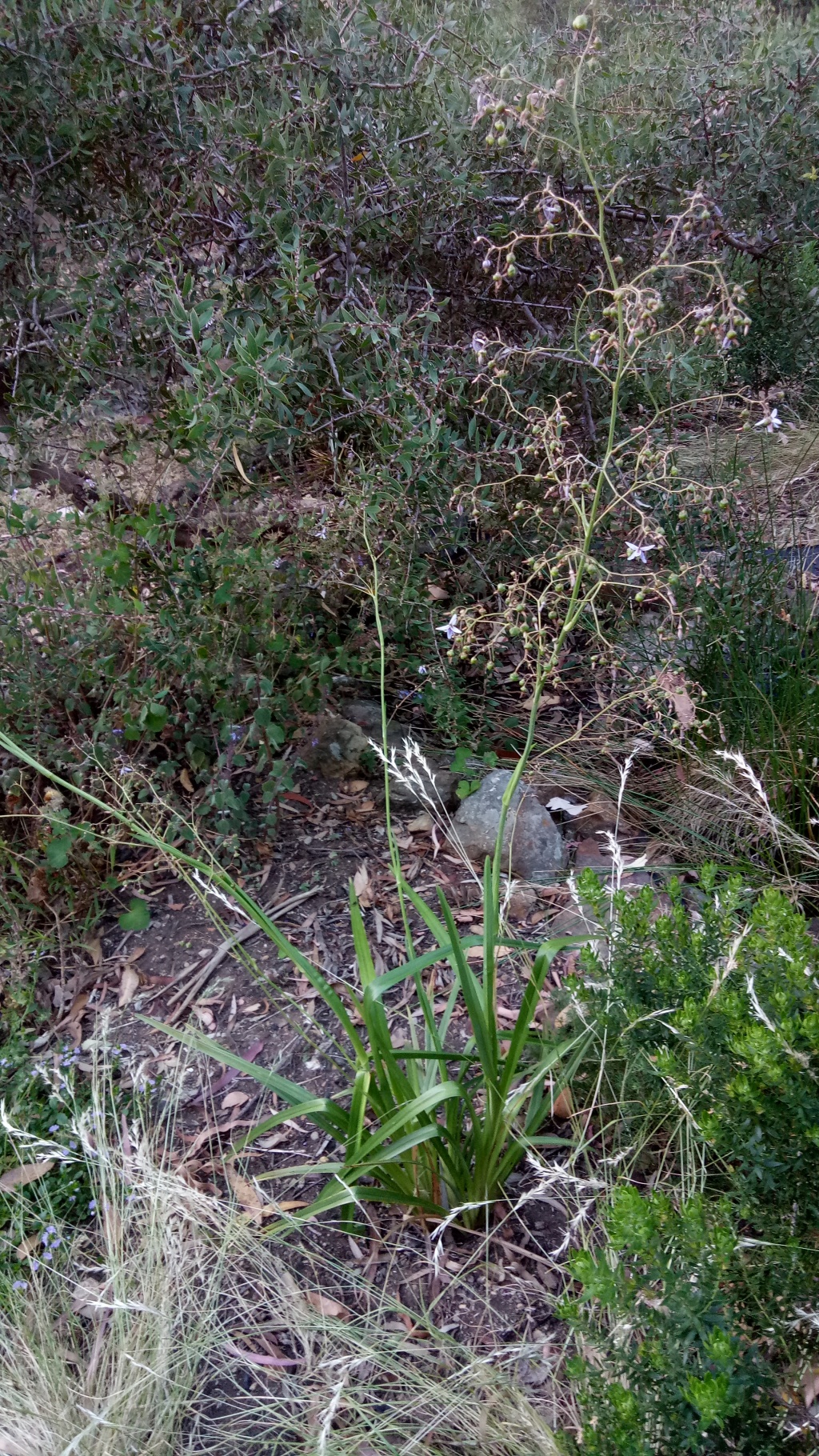Dianella longifolia
R.Br. Pale Flax-lilyPlant solitary or rhizomatous and forming loose tufts, to c. 1.5 m high. Leaves spreading, not or hardly sheathing at base, 20–80 cm long, 7–25 mm wide, flat to broadly V-shaped or Y-shaped in section, concolorous or nearly so, smooth throughout or distantly scabrous along margins and abaxial midrib, particularly toward apex. Inflorescence rather sparse, exceeding the foliage; pedicels recurved, 7–16 mm long; flowers 15–20 mm wide, pale blue, white or greenish; perianth segments 7–10 mm long, spreading to slightly recurved, longer than stamens; staminal filaments kinked, c. 2 mm long, staminal swellings (strumae) deep yelllow to orange, c. 2 mm long, shorter than the pale yellow 3–4 mm long anthers. Berry ovoid to globular, 3–7 mm long, shining pale blue; seeds 2.5–4.0 mm diam.
LoM, MuM, Wim, GleP, VVP, VRiv, MSB, RobP, MuF, GipP, OtP, WaP, Gold, CVU, GGr, DunT, NIS, EGL, EGU, HSF, HNF, Strz, MonT, VAlp.
Two of the six recognized varieties occur in Victoria. Dianella porracea (R.Henderson) G.W.Carr & Horsfall was previously regarded as another variety of D. longifolia.
The morphological and ecological distinction between the two Victorian varieties of D. longifolia is not always clear. It is possible that the distinction is obscured by the presence of further, as yet unnamed entities in the complex.
Conran, J.G. (1994). Liliaceae. In: Walsh, N.G.; Entwisle, T.J., Flora of Victoria Vol. 2, Ferns and Allied Plants, Conifers and Monocotyledons, pp. 637–686. Inkata Press, Melbourne.
 Spinning
Spinning



